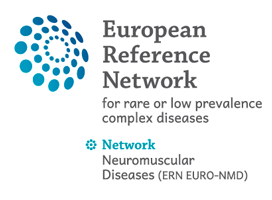01 Nov 2012
Awaji Criteria for the Diagnosis of Amyotrophic Lateral Sclerosis
Authors:
João Costa, MD, PhD; Michael Swash, MD; Mamede de Carvalho, MD, PhD
Objective To estimate the potential diagnostic added value of the Awaji criteria for diagnosis of amyotrophic lateral sclerosis (ALS), which have been compared with the previously accepted gold standard the revised El Escorial criteria in several studies.
Data Sources MEDLINE and Web of Science (until October 2011).
Study Selection We searched for studies testing the diagnostic accuracy of the Awaji criteria vs the revised El Escorial criteria in patients referred with suspected ALS.
Data Extraction Evaluation and data extraction of identified studies were done independently. The Quality Assessment of Diagnostic Accuracy Studies list was used to assess study quality. We determined the proportion of patients classified as having probable/definite ALS and derived indices of diagnostic performance (sensitivity, specificity, and diagnostic odds ratio). Quantitative data synthesis was accomplished through random-effects meta-analysis, and heterogeneity was assessed with the I2 test.
Data Synthesis Eight studies were included (3 prospective and 5 retrospective) enrolling 1187 patients. Application of Awaji criteria led to a 23% (95% CI, 12% to 33%; I2 = 84%) increase in the proportion of patients classified as having probable/definite ALS. Diagnostic performance of the Awaji criteria was higher than the revised El Escorial criteria (pooled sensitivity: 81.1% [95% CI, 72.2% to 90.0%; I2 = 91%] vs 62.2% [95% CI, 49.4% to 75.1%; I2 = 93%]; pooled diagnostic odds ratio, 35.8 [95% CI, 15.2 to 84.7; I2 = 3%] vs 8.7 [95% CI, 2.2 to 35.6; I2 = 50%]). Diagnostic accuracy of Awaji criteria was higher in bulbar- than in limb-onset cases.
Conclusion The Awaji criteria have a significant clinical impact allowing earlier diagnosis and clinical trial entry in ALS.
The Awaji recommendations for the use of electrodiagnostic studies in the diagnosis of amyotrophic lateral sclerosis (ALS) were proposed in 20081 to enable earlier diagnosis of ALS to be achieved to meet an acknowledged need to obviate diagnostic delay and to promote earlier entry into clinical trials.2 For this purpose, a new algorithm was proposed on the background of the well-established revised El Escorial criteria (rEEC).3 This algorithm used the recommendations regarding topographical regions and the same number of abnormal muscles in each region as proposed in the rEEC recommendations, emphasizing the importance of a suitable clinical context. The Awaji criteria recommended that neurophysiological data should be used in the context of clinical information, not as a separate, stand-alone set of data. In addition, fasciculation potentials associated with signs of reinnervation were considered as evidence of lower motor neuron lesion, in particular in cranial-innervated or strong limb muscles. It was suggested that this new set of interpretative guidelines, which essentially followed conventional clinical practice, would increase diagnostic sensitivity without major change in specificity.1Table 1 summarizes the similarities and differences between both sets of diagnostic criteria.
Following the seminal article, a number of reports from different centers have been published testing the utility of the Awaji criteria in supporting the diagnosis of ALS. Most of these studies were retrospective, based on analysis of databases, and, therefore, did not necessarily follow all the methodological recommendations in the Awaji criteria for diagnostic studies in ALS.4 Uncertainty about the true diagnostic performance of these new criteria led us to undertake this systematic review and meta-analysis5,6 to assess strengths and weaknesses in the recommendations. The results are relevant for everyday clinical practice, as well as for clinical trials.

